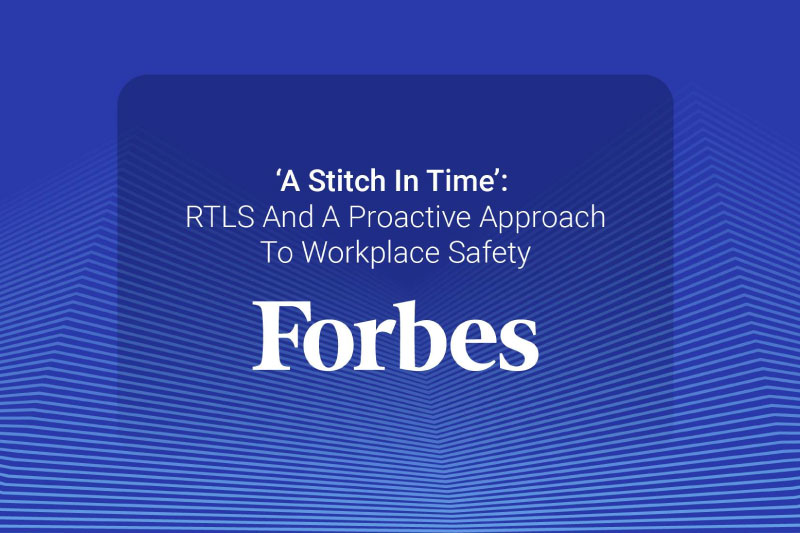As published on Forbes by Ozgur Ulku (20 February 2024)
Even as digitization continues to yield transformative impacts across every industry, creating greater efficiencies and smoother workflows, workplace safety remains a significant problem: In late 2023, the Bureau of Labor Statistics reported a 5.7% uptick in workplace fatalities from 2021 to 2022, with a worker dying on average every 96 minutes. Occupations involving transportation, construction and material handling were particularly dangerous, with workers in these spaces composing nearly half of fatal workplace injuries. Injuries to healthcare workers, often as a result of violent altercations, also experienced an alarming rise. All in all, even as many industries reap the benefits of technological innovation, their workers remain vulnerable to unsafe working conditions.
However, the reality is that while most enterprise leaders will acknowledge these problems, few make the necessary investments to deploy tools that will safeguard their people and assets. Unfortunately, in our experience, it often takes a major workplace injury or even a fatality before company heads take action.
There are a few specific industry areas where workplace safety, both for workers and for costly instruments, is particularly challenging to maintain. In each of these verticals, safeguarding the well-being of employees and assets comes down to knowledge—specifically, knowing precisely where workers and equipment or assets are at any given time. Real-time location systems (RTLS) can provide this information, improving monitoring and ameliorating working conditions in each of these areas.
Forklift Safety
Forklifts are ubiquitous in factory and warehouse environments; consequently, accidents involving forklifts cause an alarming number of injuries, fatalities, and material damages each year. Most of these are the result of falls, collisions, and tip-overs. Factories and warehouses tend to be bustling environments, with both pedestrians and forklifts operating in a hurry—sometimes without operators and other workers having sufficient visibility or situational awareness of each others’ presence. Forklifts may also be operating around other forklifts or navigating various corners, nooks, and crannies within a vast warehouse setting.
Minimizing accidents and damages comes down to being able to pinpoint the exact location of a forklift at a given time and simultaneously being able to communicate with its operator. In addition, knowing precisely where every employee is working helps not only diminish the potential for collisions but also facilitate a speedy emergency response in the event of an accident.
Staff Duress
The issue of staff duress in healthcare RTLS settings has received attention recently. Hospital staff may be vulnerable to verbal or physical assaults from patients and visitors alike, requiring immediate intervention from security services. However, other situations may also arise wherein a healthcare worker might find themselves addressing a patient’s health crisis that they are physically unable to manage alone, due to needing medical supplies or machines that aren’t immediately within reach or interventions that require more than one pair of hands.
Staff duress is not limited to healthcare settings; in a large warehouse or factory setting, workers may find themselves suddenly ill, hurt, or otherwise in trouble and call for assistance. In any of these situations, the speed of the emergency response—bringing needed people, medical supplies, or tools—is dependent on knowing precisely where within a capacious factory, warehouse, or hospital that staff member is located at the moment they need help.
Emergency Mustering
Situations involving fires, earthquakes or other natural disasters may result in massive office spaces needing to be evacuated quickly. Yet, without proper planning, these situations can rapidly become chaotic and disorderly, putting everyone in danger. Organizational leaders must be able to know with certainty who was in a given workspace at the time of the decision to evacuate, whether they’ve successfully been evacuated, and whether they’ve made it to the agreed-upon mustering point.
In an office with only a handful of people, this might be possible to accomplish manually. But in a space with hundreds or thousands of people, accurately accounting for everyone is cumbersome and time-consuming, all while the moment inherently requires a rapid response. A solution that enables company leaders to get an immediate “headcount”—and to know if anyone is missing or if anyone has ended up in a different location than expected—can save valuable time and emergency resources and protect lives.
Lone Worker Safety
Just as bustling warehouses require safety precautions, so too do those where a single worker’s duties occur in isolation, particularly at odd hours and without close supervision. Lone workers may be vulnerable to illness, injury, or security concerns. Having awareness of where exactly a lone worker is located, particularly in a large factory or warehouse setting, can be instrumental in making sure that help can reach them quickly in any kind of emergent situation.
The benefit of real-time location systems is in their accuracy: Within a network of electronic anchors and gateways, individuals and assets are tagged to pinpoint their exact coordinates. (The best systems can do this with sub-meter accuracy.) This level of precision ensures that, in an emergency, response teams aren’t going from room to room or corridor to corridor within a hospital, warehouse or factory, or an oil and gas site, frantically searching for the person in crisis. Rather, they go straight to the target as fast as possible. By knowing exactly where the worker is, these systems save time when it is most of the essence.
Workplace accidents aren’t an “if,” but a “when.” Eventually, something will happen. Particularly when considering their technology spending in the coming year, enterprise leaders must become proactive in engaging and deploying solutions that help protect their workers and assets—ideally, before a crisis occurs.






